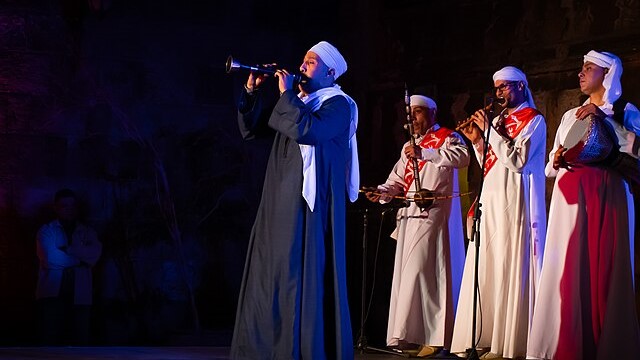On a Cairo evening, the sound of the oud drifts through narrow alleyways, mingling with the steady beat of the tabla and the plaintive rise of the violin. These instruments, central to Egypt’s musical heritage, carry more than melody. They hold centuries of memory, weaving together strands of history, ritual, and identity.
Traditional music in Egypt is less an ornament than an inheritance. It reflects the rhythms of daily life while echoing the country’s complex past. Across villages and cities, styles diverge yet remain deeply tied to place. Shaabi, with its exuberant tempos and streetwise sensibility, pulses with the concerns of ordinary people. By contrast, the refined strains of classical Arabic music recall the grandeur of an older cultural order, offering reminders of Egypt’s stature as a center of civilization.
Such music has long served as the soundtrack of communal experience. At weddings, festivals, and religious observances, songs function as both entertainment and storytelling. Lyrics often preserve oral traditions, recounting themes of love, grief, endurance, and joy. The gatherings themselves transform music into a social bond, reinforcing ties within families and across neighborhoods.
Layered within these traditions are traces of Egypt’s long encounter with outside influences. From Pharaonic ritual chants to the tonal shifts introduced during the Islamic conquests and the Ottoman period, Egyptian music reflects centuries of cultural exchange. The result is neither static nor uniform but a hybrid form, embodying the country’s ability to absorb and reshape external currents while maintaining its own artistic core.
Today, this legacy continues to evolve. Contemporary musicians draw on folk and classical structures while experimenting with rap, pop, and electronic sounds. The fusion has brought Egyptian music to new audiences, allowing younger generations to reconnect with heritage while speaking in the idioms of global culture. The work of these artists suggests a revival rather than a retreat, a blending of past and present that underscores the vitality of the tradition.
Yet the tradition is not without challenges. Globalization, mass media, and changing listening habits have shifted cultural attention toward international pop and digital platforms. In response, cultural advocates and musicians emphasize preservation, recording and teaching older repertoires to ensure continuity. Efforts to archive performances and integrate traditional instruction into educational programs reflect a broader recognition: that music is not simply an art form, but a cornerstone of cultural memory.
Egypt’s traditional music, whether in the plaintive call of a flute in Upper Egypt or the street rhythms of Cairo’s neighborhoods, remains a powerful emblem of identity. It tells the story of a people through sound—binding past and present, anchoring heritage even as it adapts to change.
Sources:
- Danielson, Virginia. The Voice of Egypt: Umm Kulthum, Arabic Song, and Egyptian Society in the Twentieth Century. University of Chicago Press, 1997.
- Racy, A.J. Making Music in the Arab World: The Culture and Artistry of Tarab. Cambridge University Press, 2003.
- Shannon, Jonathan Holt. Among the Jasmine Trees: Music and Modernity in Contemporary Syria. Wesleyan University Press, 2006.
- El-Shawan, Salwa. “Traditional Arab Music Ensembles in Egypt since 1967: ‘The Continuity of Tradition within a Contemporary Framework’.” Ethnomusicology, vol. 28, no. 2, 1984, pp. 271–288.

